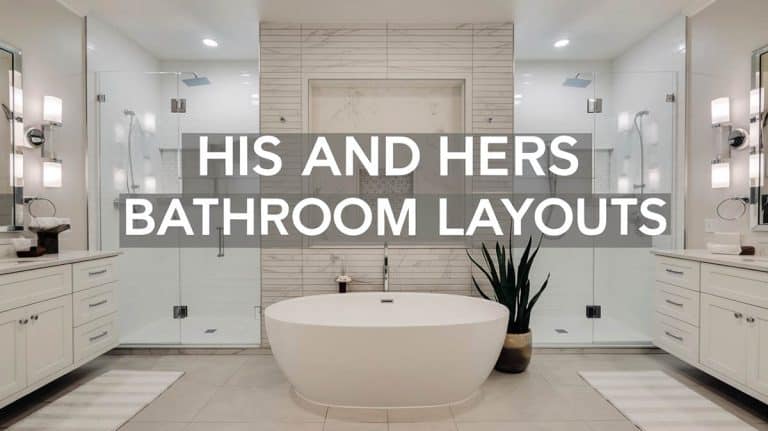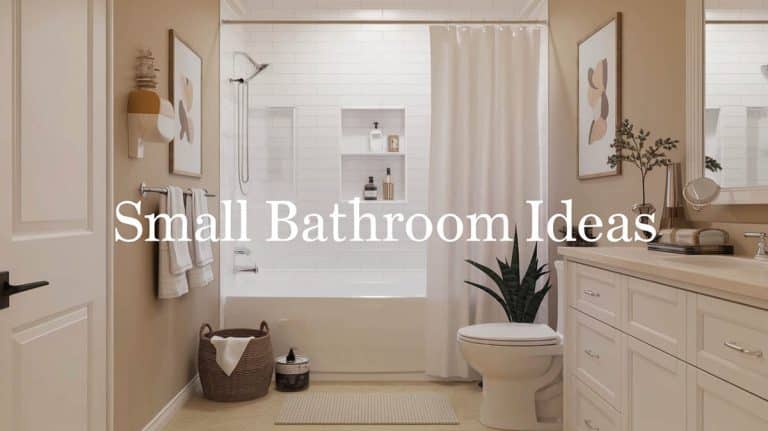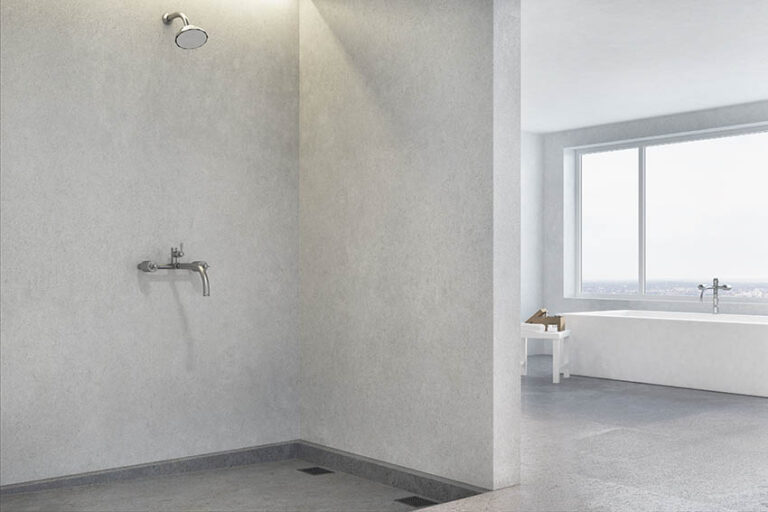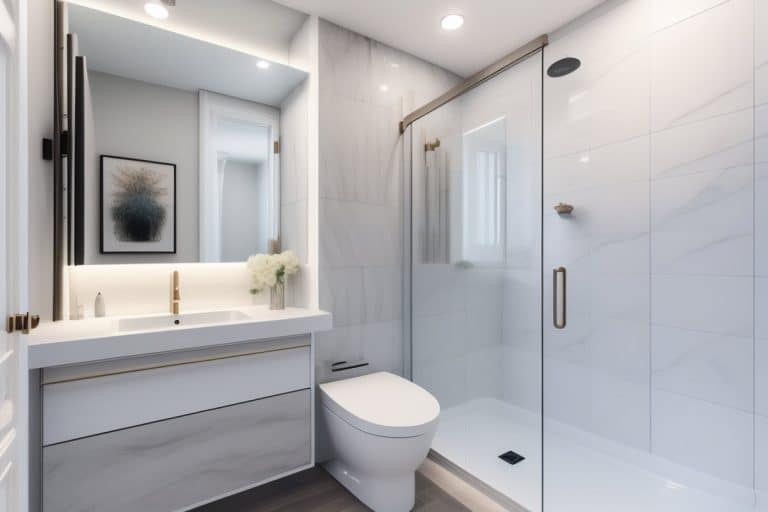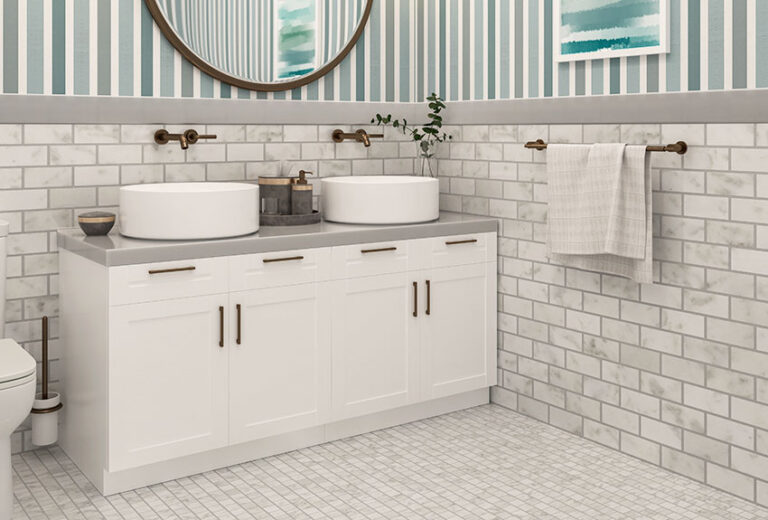7 Types Of Bathtub Drains (Stopper & Strainer Guide)
Here are the different types of bathtub drains, including the different stopper models and strainers, if they are interchangeable, and how to choose a drain assembly.
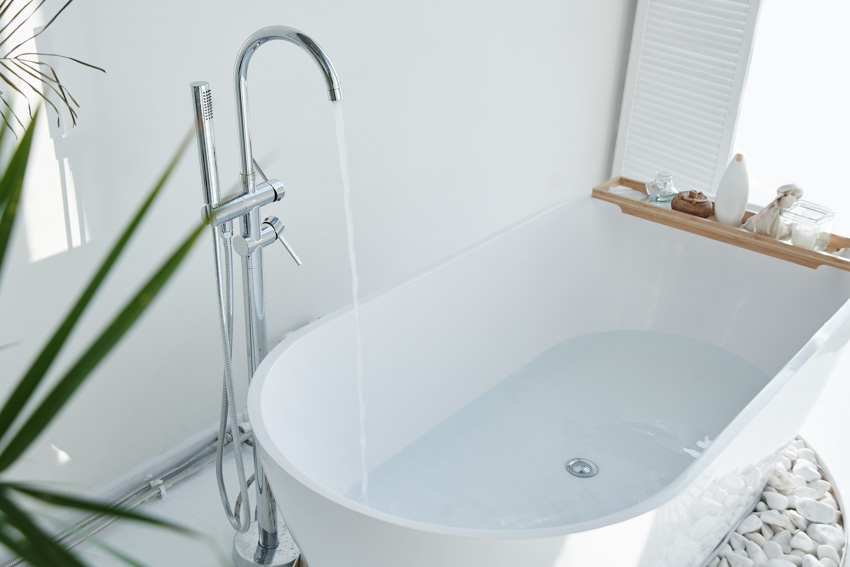
Bathtub drains have only one purpose — to keep water in the tub. But do you know that there are other types of drainage assemblies besides the one you may be using now? And each one of them has a specially designed stopper.
Drain Stopper Types
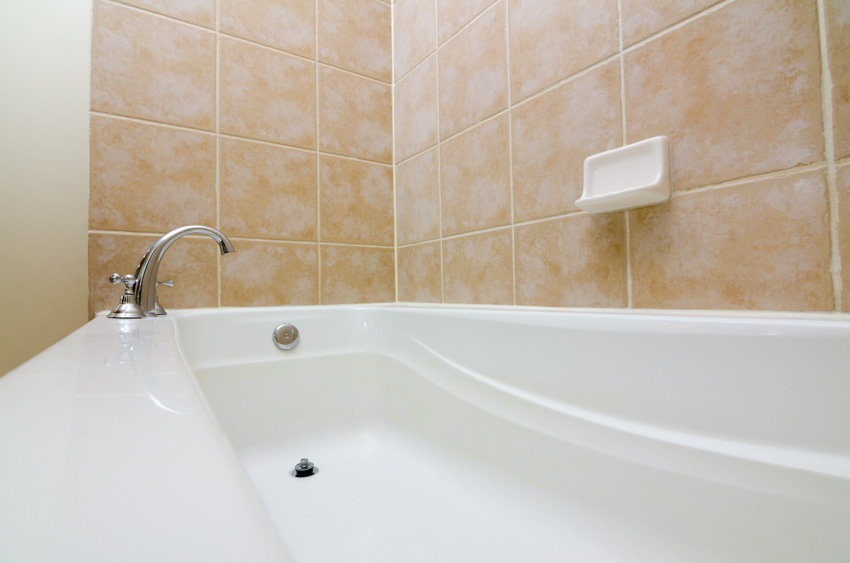
Have you ever experienced your bathtub getting clogged? If not, you might not be aware that your bathtub drain has a uniquely designed stopper.
Knowing the type of stopper your bathtub has will save you the hassle and the stress later. You won’t have any problem finding what you need when you need them. So here’s a list of the different bathtub drain stoppers
Push And Pull Stopper
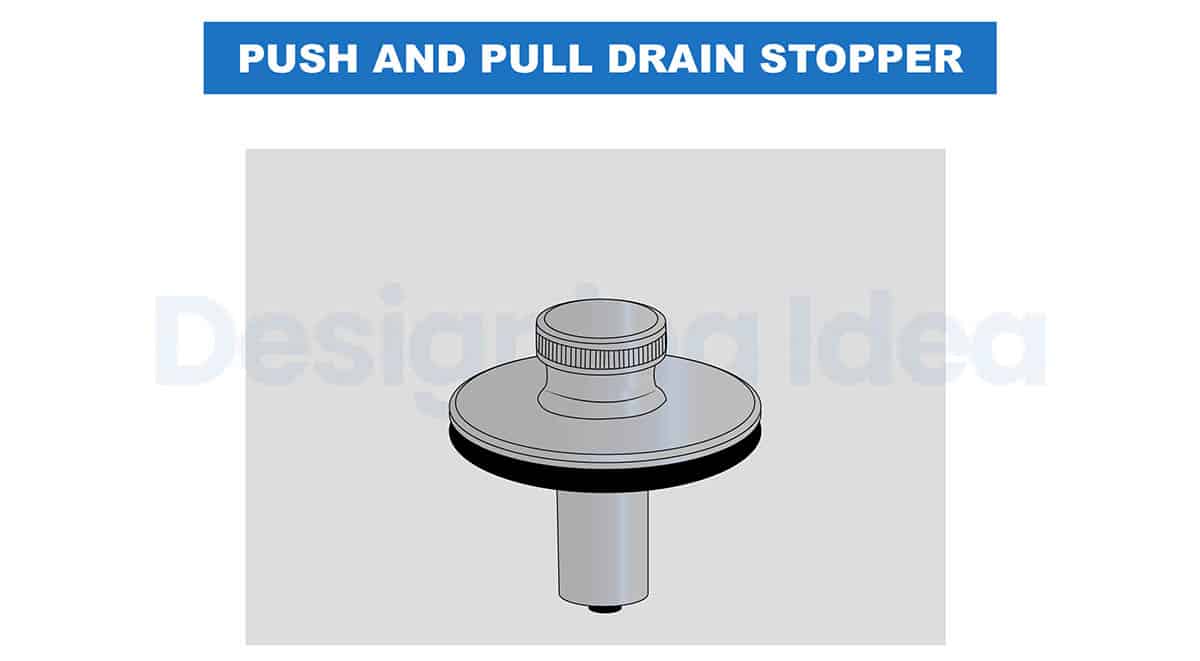
This type of drain plug has a knob on the top cap that serves as the open/close mechanism. When you want to drain the water, you pull it up. And when you want to fill the tub with water, you push it down.
The push and pull stopper is installed by attaching the stopper’s body to the drain using a set screw found beneath the top cap. The stopper’s simple design requires minimal care.
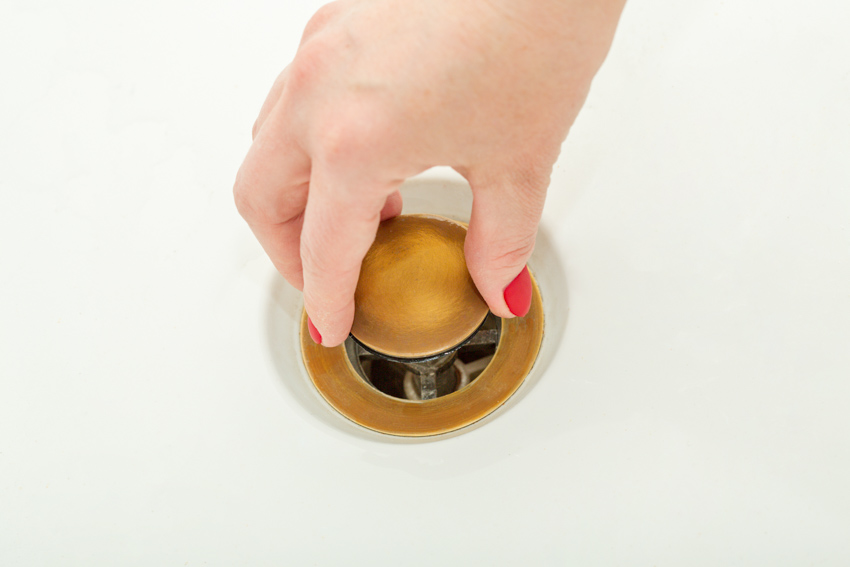
Install difficulty: Easy
To remove or install a new push-pull drain assembly:
- Ensure the drain is in the open position.
- Lift up the knob of the drain stopper and rotate it counterclockwise.
- Continue turning until the stopper is fully unscrewed and can be lifted free from the drain opening.
Lift And Turn Drain
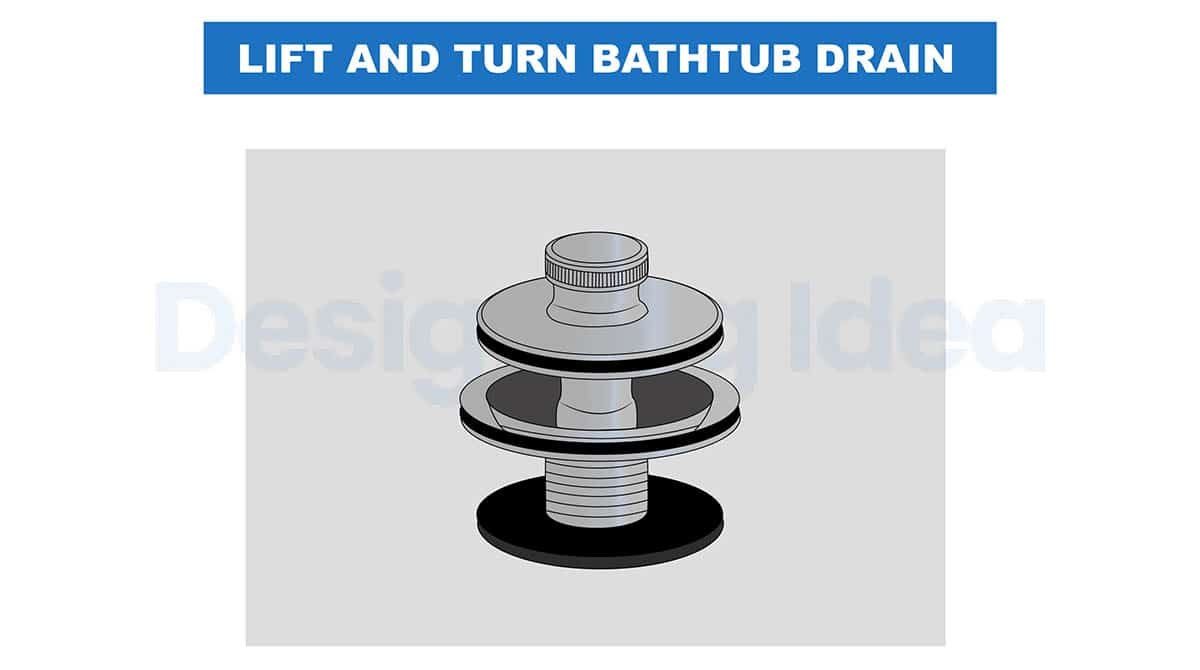
Also called the lift and lock, this stopper has a tiny knob on its cap. You can use this to open or close the plug by twisting it. If you want to open it, lift the knob and turn it in a counter-clockwise motion. If you want to close it, twist it clockwise until it goes down. Be careful not to close the stopper tightly because it might get stuck.
Just like the push and pull stopper, its practical design requires little maintenance. All you need to do is clean the plug from time to time to prevent dirt from accumulating.
You can install the lift-and-turn stopper by installing a set screw into the threaded center of the drain crossbar. You can find the setscrew under the top cap of the plug. Use a small screwdriver or hex key to unscrew the set screw.
Turn the stopper counterclockwise until it comes loose from its mounting post. For easy drain removal, you may need to use pliers to grasp the mounting post from the assembly.
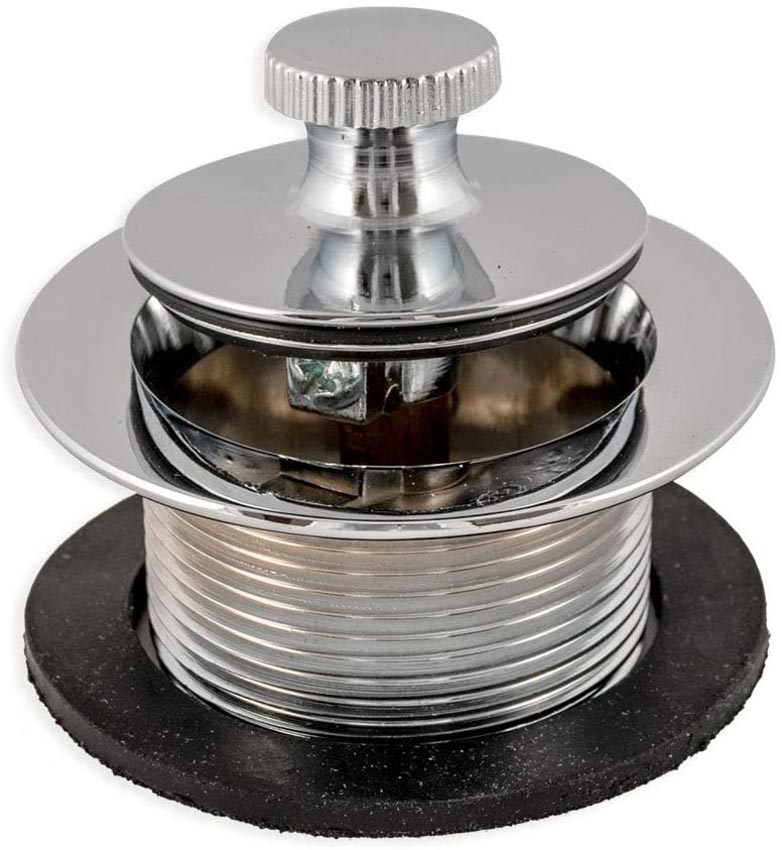
See this lift and turn tub stopper at Amazon [sponsored link]
Flip Switch
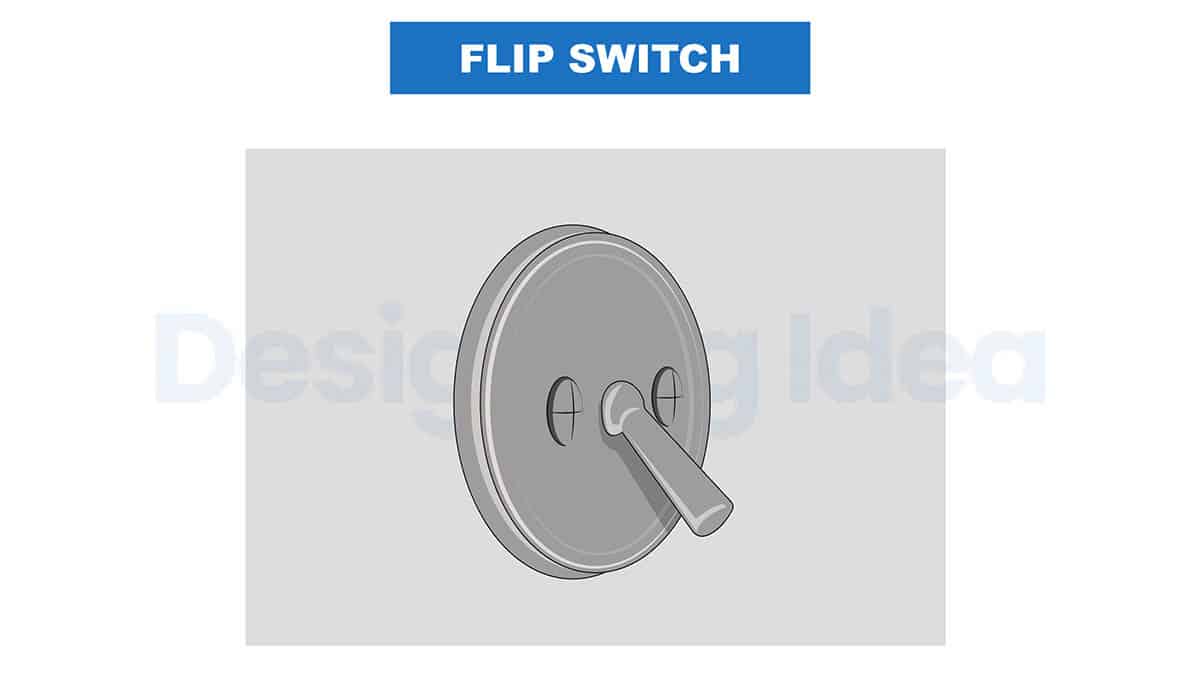
The flip-switch stopper has a toggle lever on top of the plug, which can be moved from side to side to open or close it.
It is one of the easiest to install because it does not require any tools. All you need to do is push it into the drain, and the built-in O-rings keep it in place and act as a watertight seal.
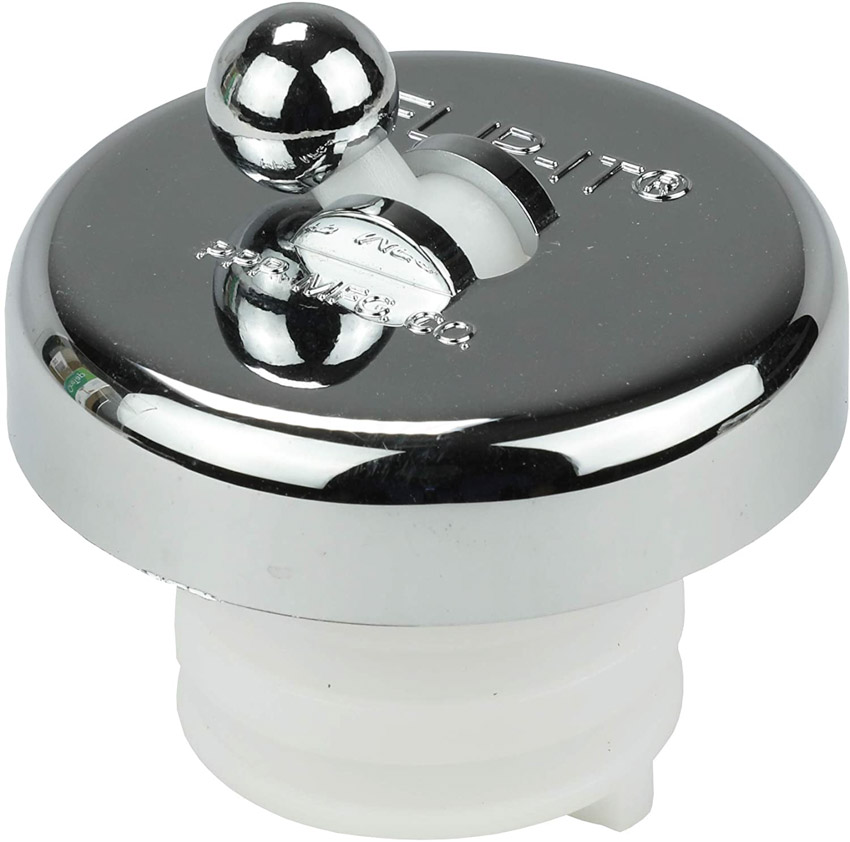
See this flip switch stopper at Amazon [sponsored link]
Tip-Toe Tub Drain
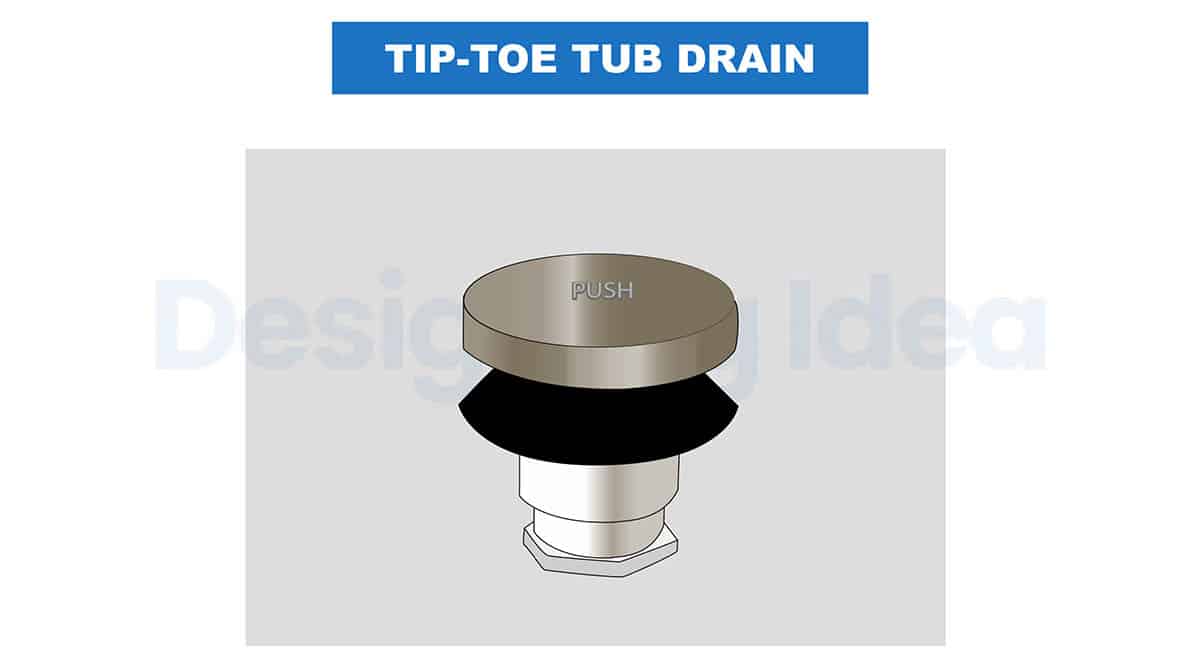
Also called a toe-touch or toe-tap stopper, this plug is similar to the lift-and-turn and push-and-pull stoppers. It is also installed just like the first two plugs. The only difference is that the tip-toe has a spring-loaded design.
Using it is also much simpler — you open or close the stopper by pushing it with your toe. The tip-toe plug also requires little maintenance. But the spring might wear out after quite some time and needs replacing.
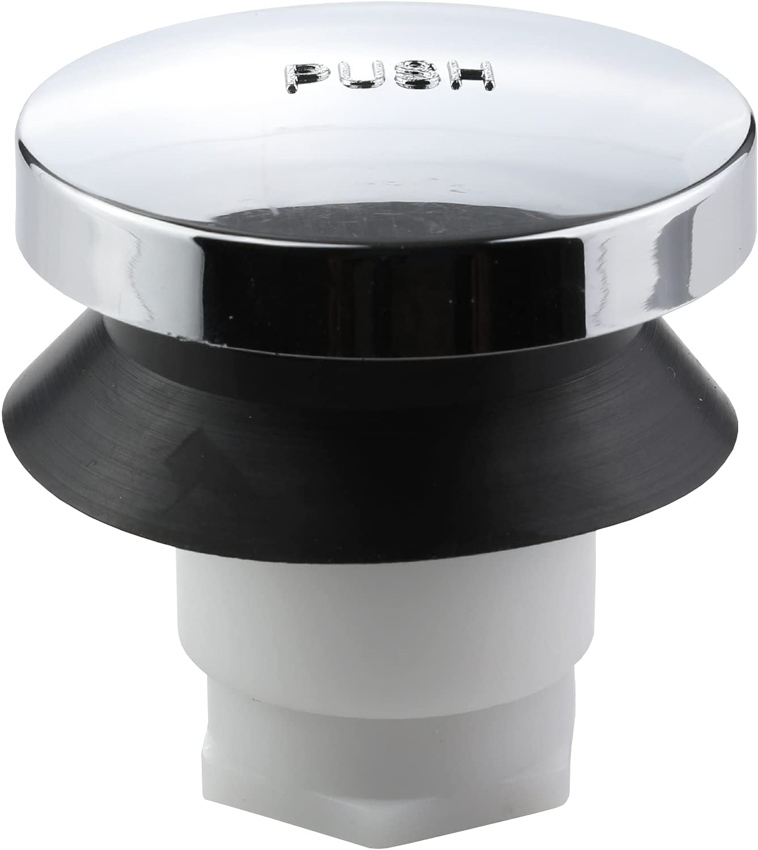
See this touch-toe stopper at Amazon [sponsored link]
Pop-Up Tub Drain
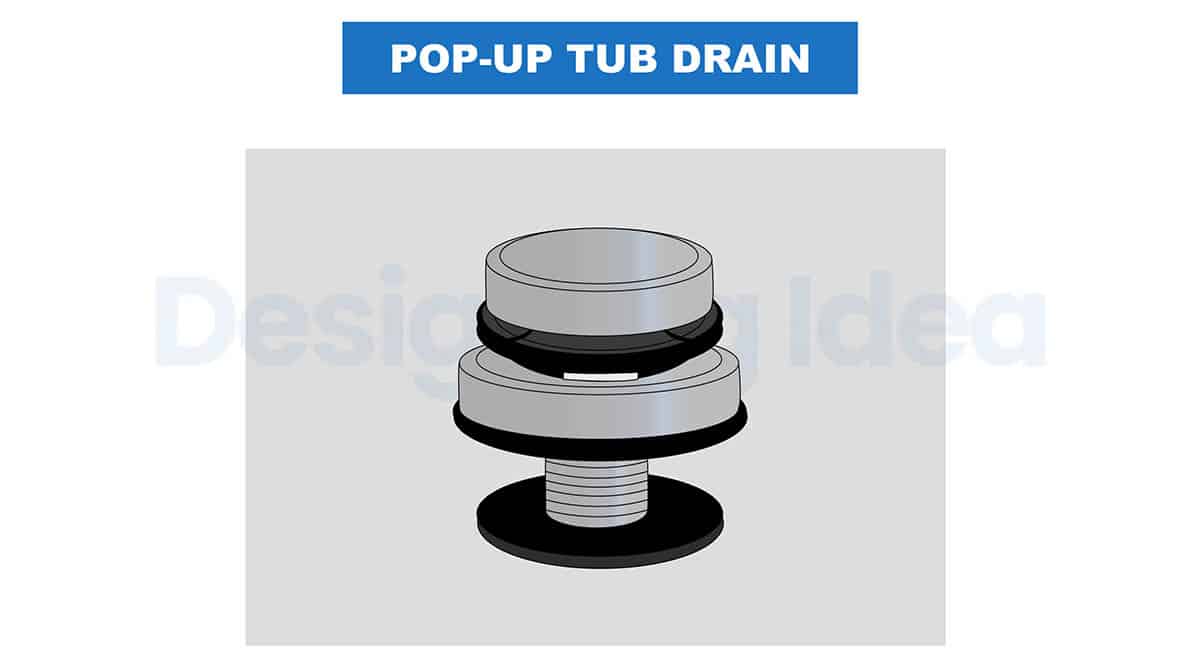
The pop-up tub drain looks like a bathroom sink pop-up. It works similarly to the trip-lever plug because they have the same type of lever on the overflow plate. You can raise or lower the lever to seal or drain the water.
If you lift the lever, the connecting rod in the overflow pipe moves. As the rod moves, the rocker arm connected to the pop-up stopper rotates. The spring at the bottom of the connecting rod controls the stopper.
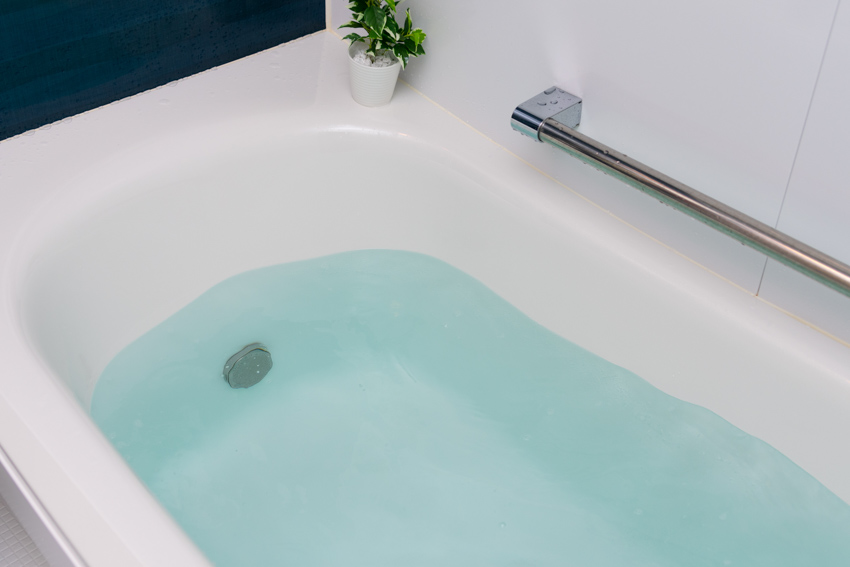
Cleaning the pop-up stopper is a bit complicated. You must remove the stopper and the rocker’s arm from the water drainage opening and the rod linkage from the overflow pipe.
Tub Strainer
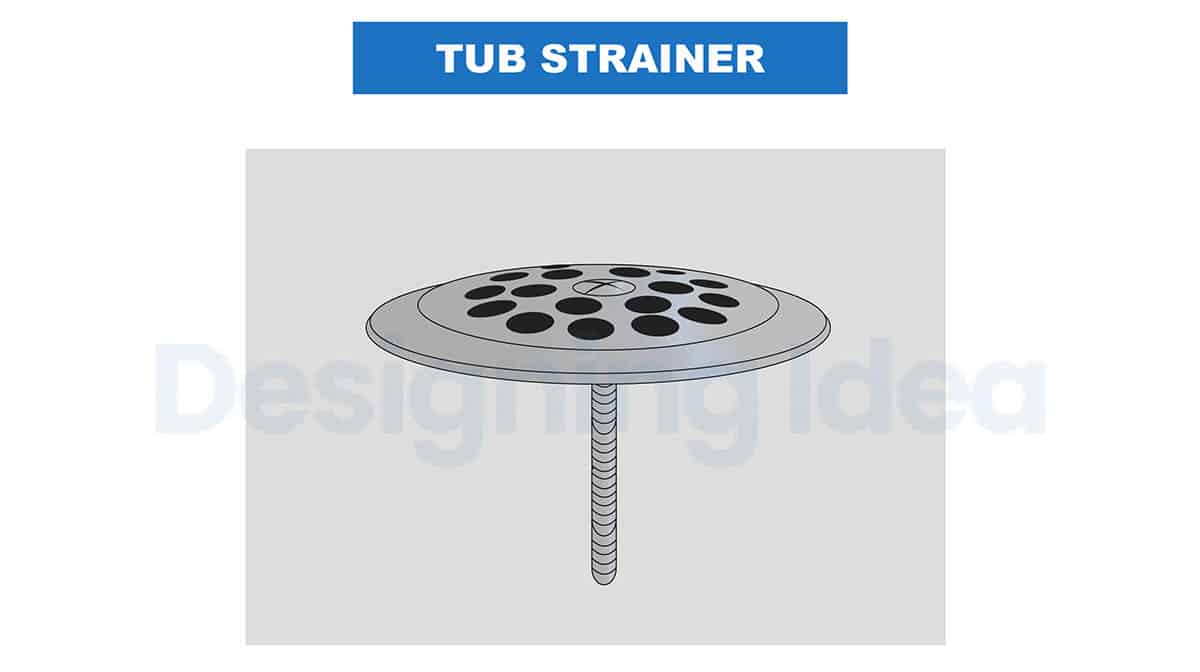
A tub strainer, unlike the bathtub stoppers on this list, does not keep water in the tub or shower. But it catches debris, hair, and small things, so they don’t clog it down the drain. It is made of either plastic, silicone, or stainless steel mesh.
These strainers are designed to make it easy to remove debris before it gets inside the drain. Some have suction cups to help keep them in place and they usually have a universal fit which is designed to cover a variety of outlet sizes.
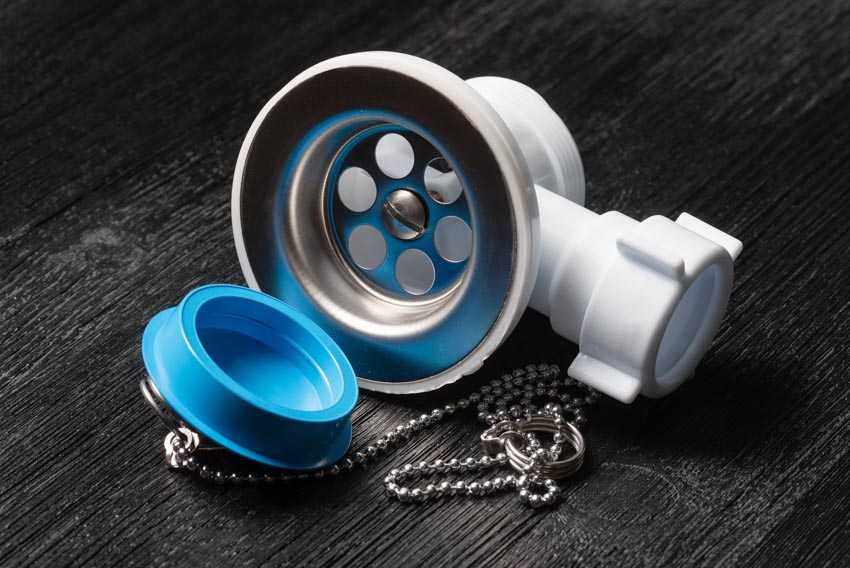
Picture of a tub stainer with attached plug.
Trip Lever Bath Drain
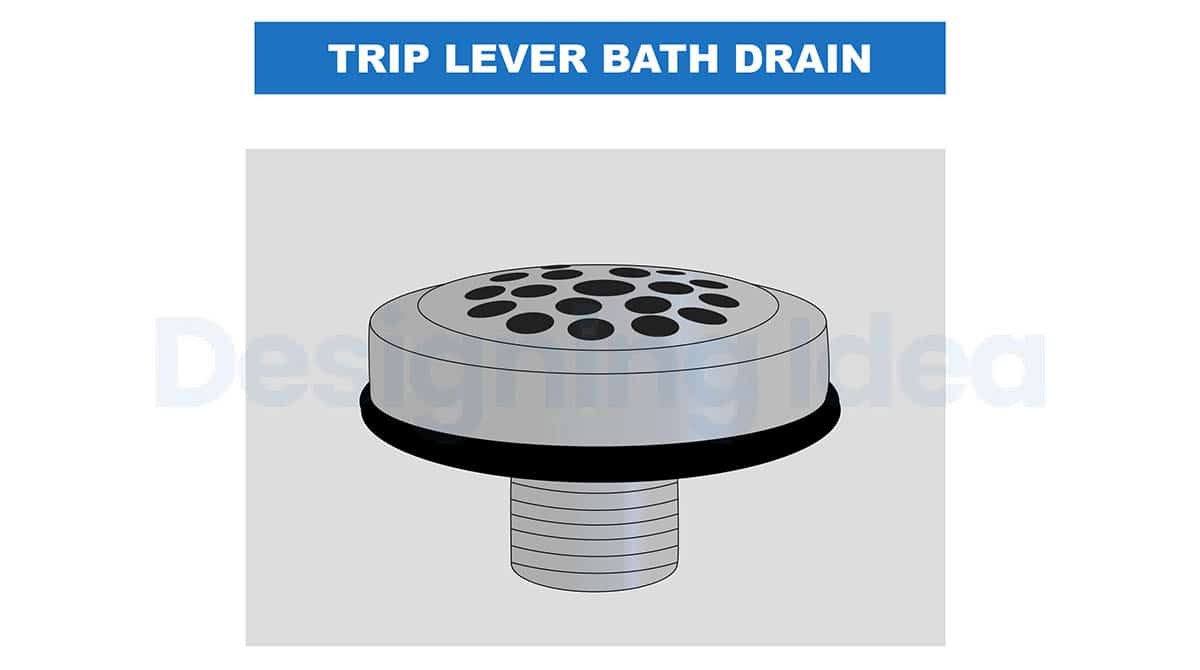
A trip lever is used in many types of bathtubs. It has a lever on the overflow plate found in front of the tub. This plug type has a strainer instead of a pop-up stopper in the drainage opening.
How Does a Trip Lever Bath Drain Work?
The trip lever drain has different parts that work together to release or stop the water. First is the small up/down lever found on the overflow plate of the bathtub.
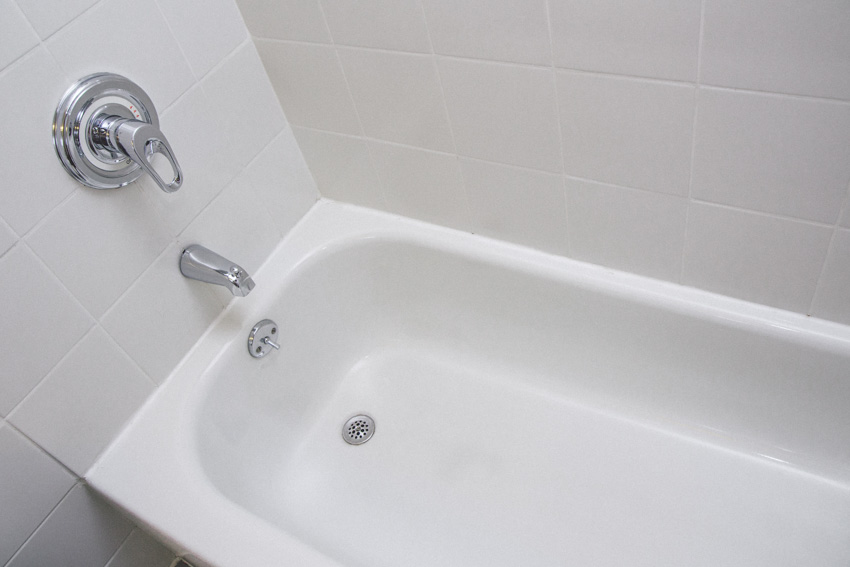
This lever controls a connecting rod found inside the overflow pipe, which moves up and down when you move the lever. At the bottom of the plug is a type of plunger that also serves as a weight to seal the drain opening.
When you push the lever down, the plunger is lifted, and the water gets drained. When the lever is up, the plunger goes down and seals the drainage point. If the tub overflows, excess water can flow through the overflow tube and flow away because the plunger is hollow.
Clawfoot Tub And Overflow Drain
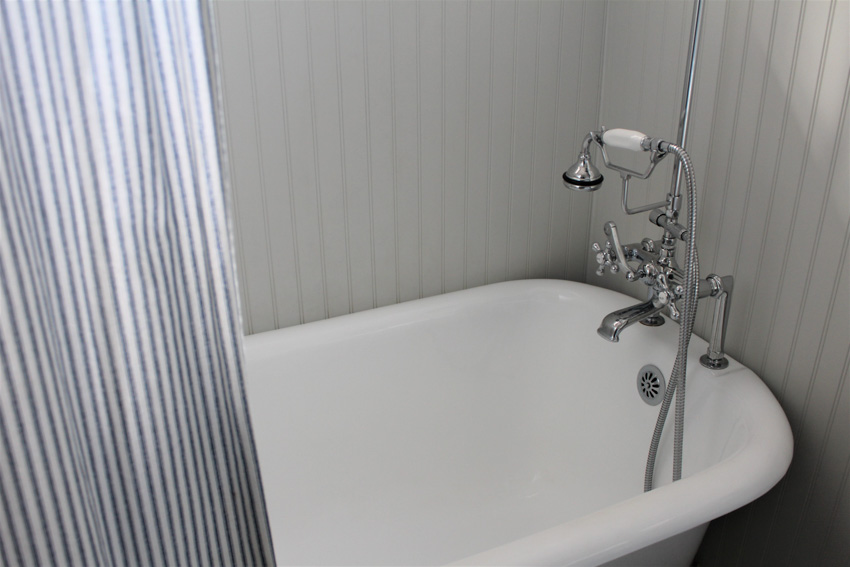
There are still a number of beautiful bathrooms with clawfoot tubs in old homes. These types of tubs are freestanding and have the overflow attached outside the tub together with exposed pipes. Also, both the pipes for the water source and the drainage enter through the floor.
Are Drains Interchangeable?
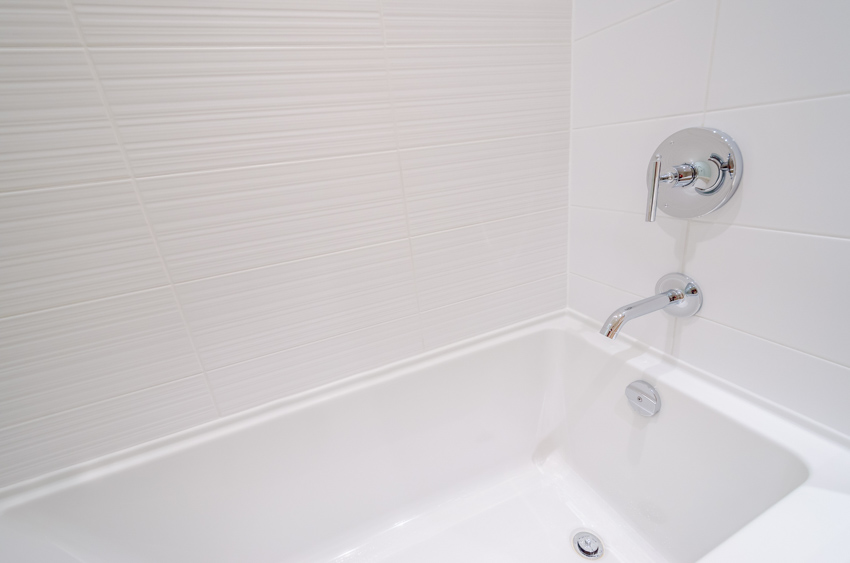
The industry sets plumbing standards, so they are the same, including the drains. But this only applies to the width of the drains, pipes, and other fixtures. The length is still different depending on the type of plug you use.
A bathtub drain is around 1-5 in. in diameter and can fit any bathtub that is 14 – 26 inches in depth. The outlet point size is designed to fit the P-trap. However, P-traps don’t have a standard length, so you need something that fits your plumbing.
How Do I Choose A Bathtub Drain?
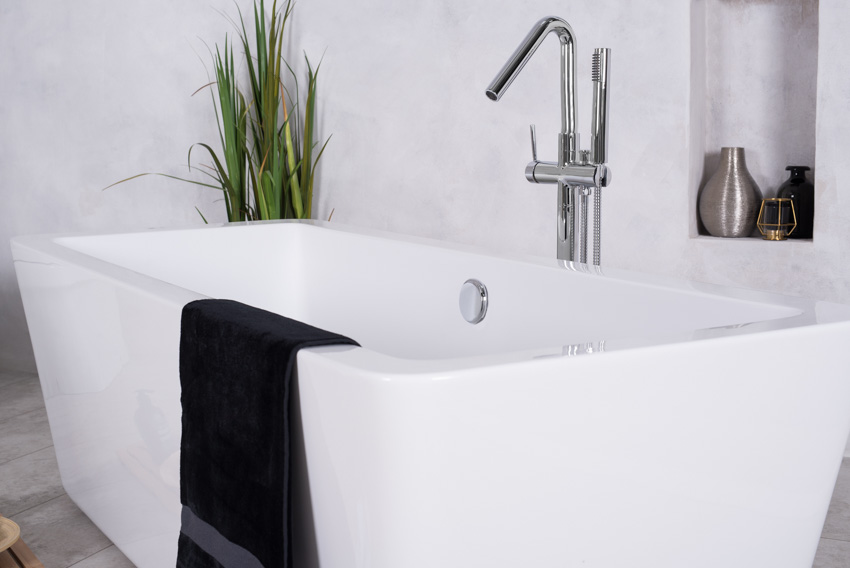
But, you need to take note of the other components like the P-trap and the outflow pipe. After that, you need to consider the style of the drain. You should add an overflow drain also to prevent the bathtub from overflowing.
The building codes of your area might affect the type of drainage outlet you choose. Look at the guidelines and regulations for the size of the components, like the drainage pipe and P-trap. Read more about bathtub dimensions here.
Waste And Overflow Kits
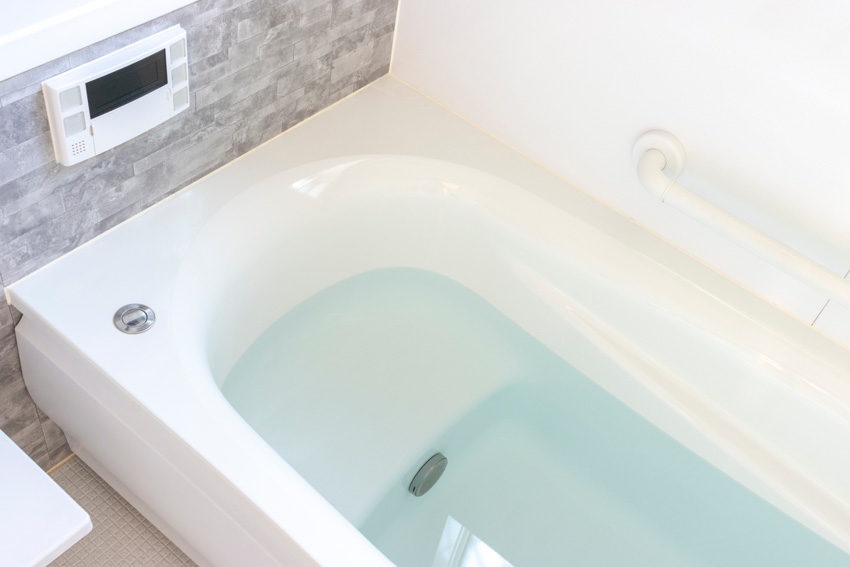
You can choose from two types of waste and overflow kits — common and glue in.
Common Waste and Overflow Kit: Common waste and overflow kits are compatible with bathtubs that have an access hole that goes through the floor or an adjacent wall. The overflow body of this kit has a long tube that makes the vertical riser from the overflow down to the Tee.
The top portion of the Tee has a slip joint fitting so you can cut the tube of the overflow to fit tubs with different depths.
There’s another slip joint fitting found at the side opening of the Tee. Its purpose is to adjust the waste arm from the drainage shoe easily. Then, the tailpiece of the Tee drops down to the P-trap.
Glue In Waste and Overflow Kit: The glue-in overflow kit is compatible with bathtubs that are fully skirted and has no access panel. It consists of a tee, a casr overflow body, and a cast tub shoe.
The connecting lines are custom fitted from standard schedule 40 DWV grade pipe and glued in place. The glue-in kit also needs a glue-in P-trap. One of the biggest advantages of this type of overflow kit is its durability. It has no or little chance of leaking once it is glued in place.
Different Drain Styles
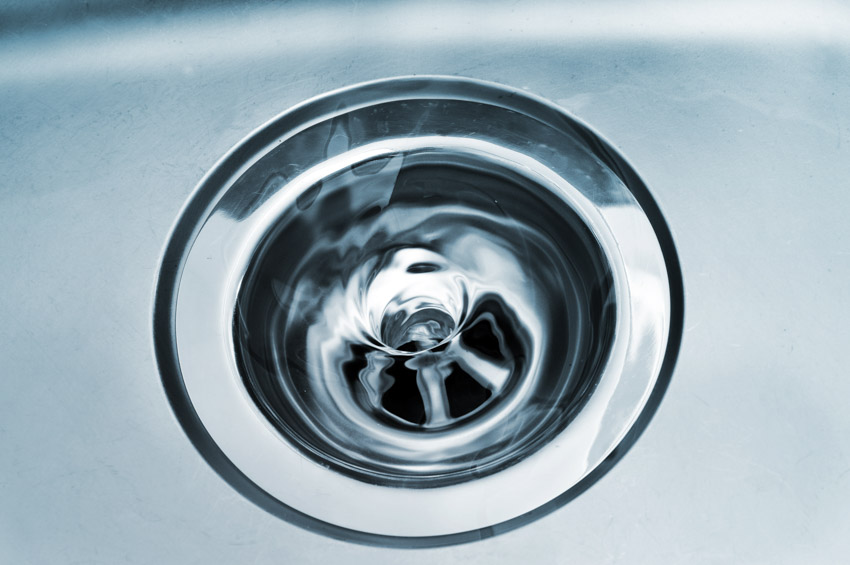
When choosing a tub drain, you also need to consider the style. Here are the different types of drains and how they work:
Straight Drains: These bathtub drainage points connect directly to a metal pipe or hub adaptor on the floor instead of a P-trap. It comes in a wide range of styles and finishes. Straight drains are easy to install and can be mostly done as DIY.
Tower Drains: These are often used with clawfoot tubs that have overflow openings. They have a pop-up release controlled by a lever on top of thedrainage pipe.
Extended Straight Drains: This type comes in three options — lift and turn, pop-up, and chain and plug. Extended straight drains are often used with freestanding bathtubs. Since they are external, you should find a style that complements your tub.
Extended Straight Drain with Swivel Head Overflow: This type has a pop-up assembly and an exclusive design that prevents overflow water from spilling on the floor. You can pair this type with most freestanding tubs, no matter what style or thickness they may have.
Whether installing a new tub or renovating an existing one, knowing each component of your bathtub is important. It will save you the hassle of getting to and from the store to change something if you get a component wrong. If you are not sure, you can always ask your plumber or installer what the best is for your tub.
See more related content in our article about the natural stone bathtub on this page.

